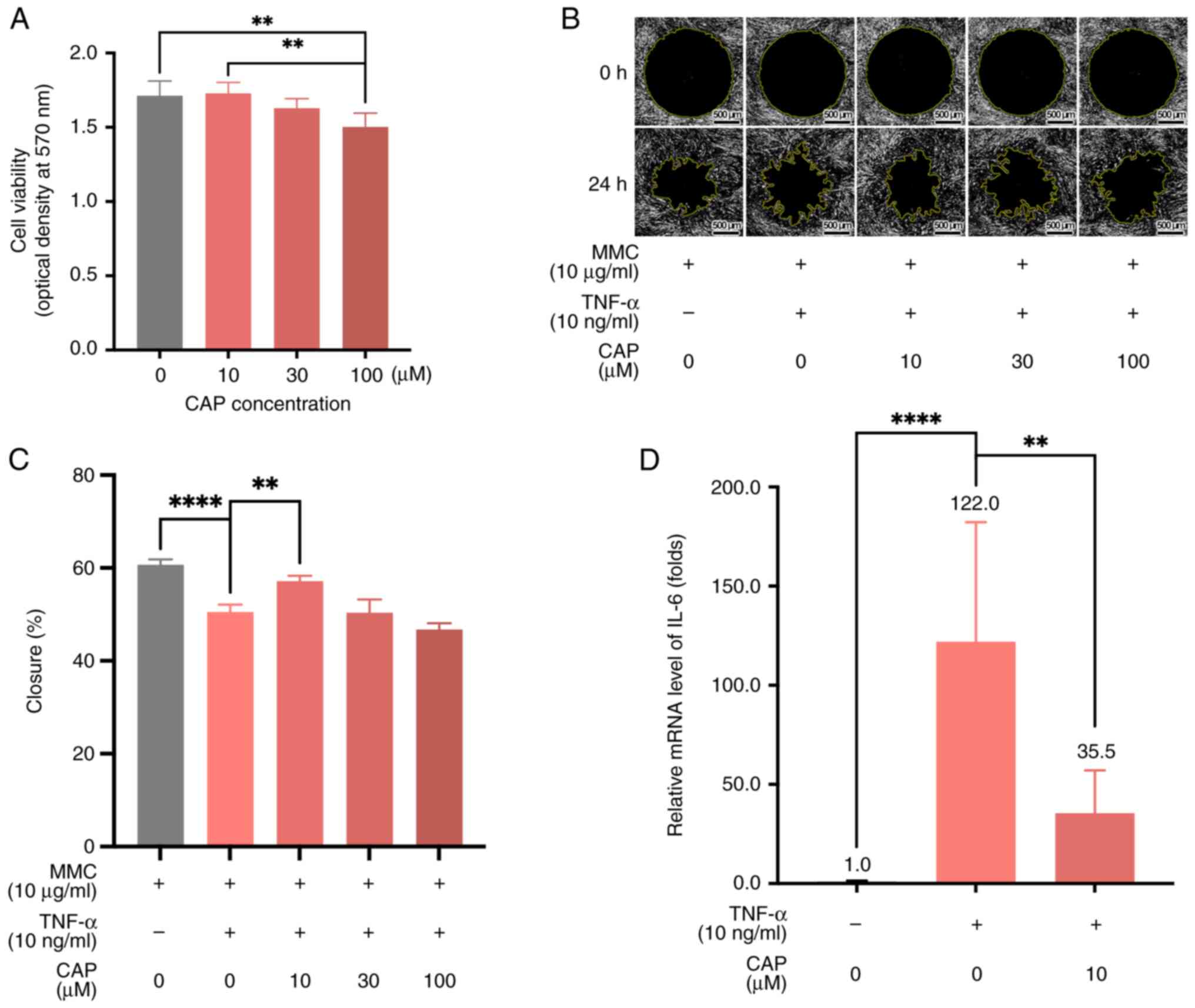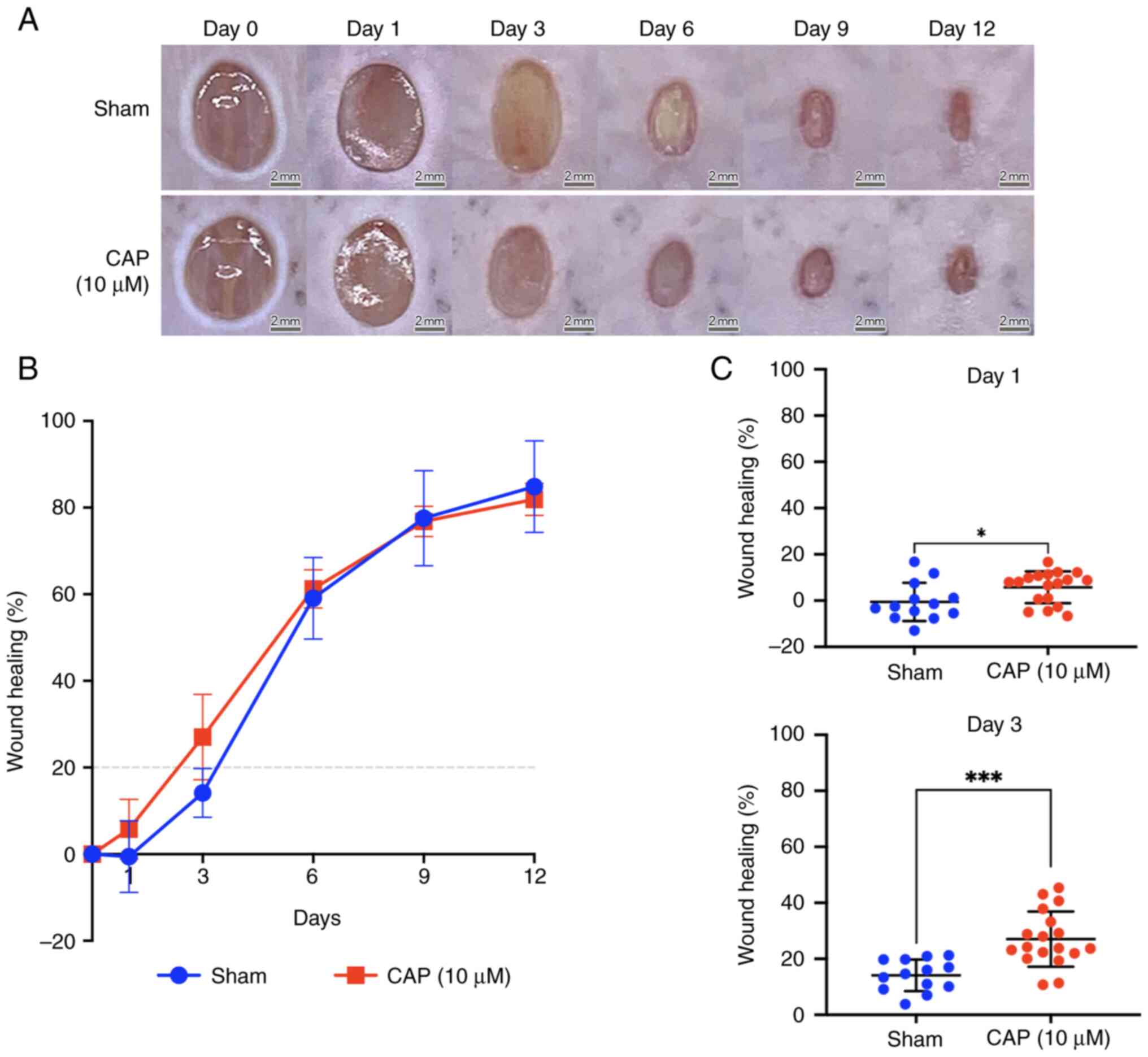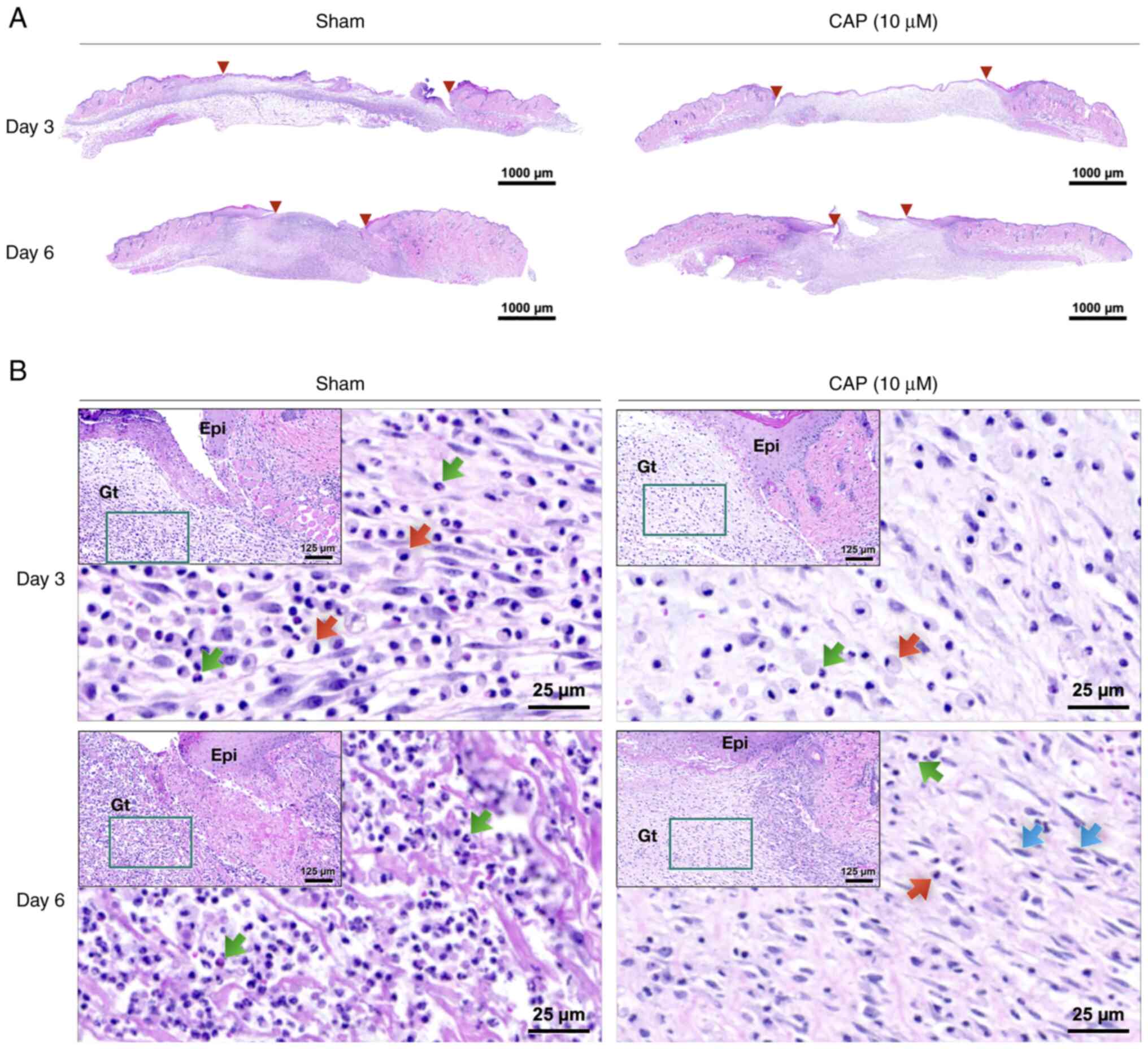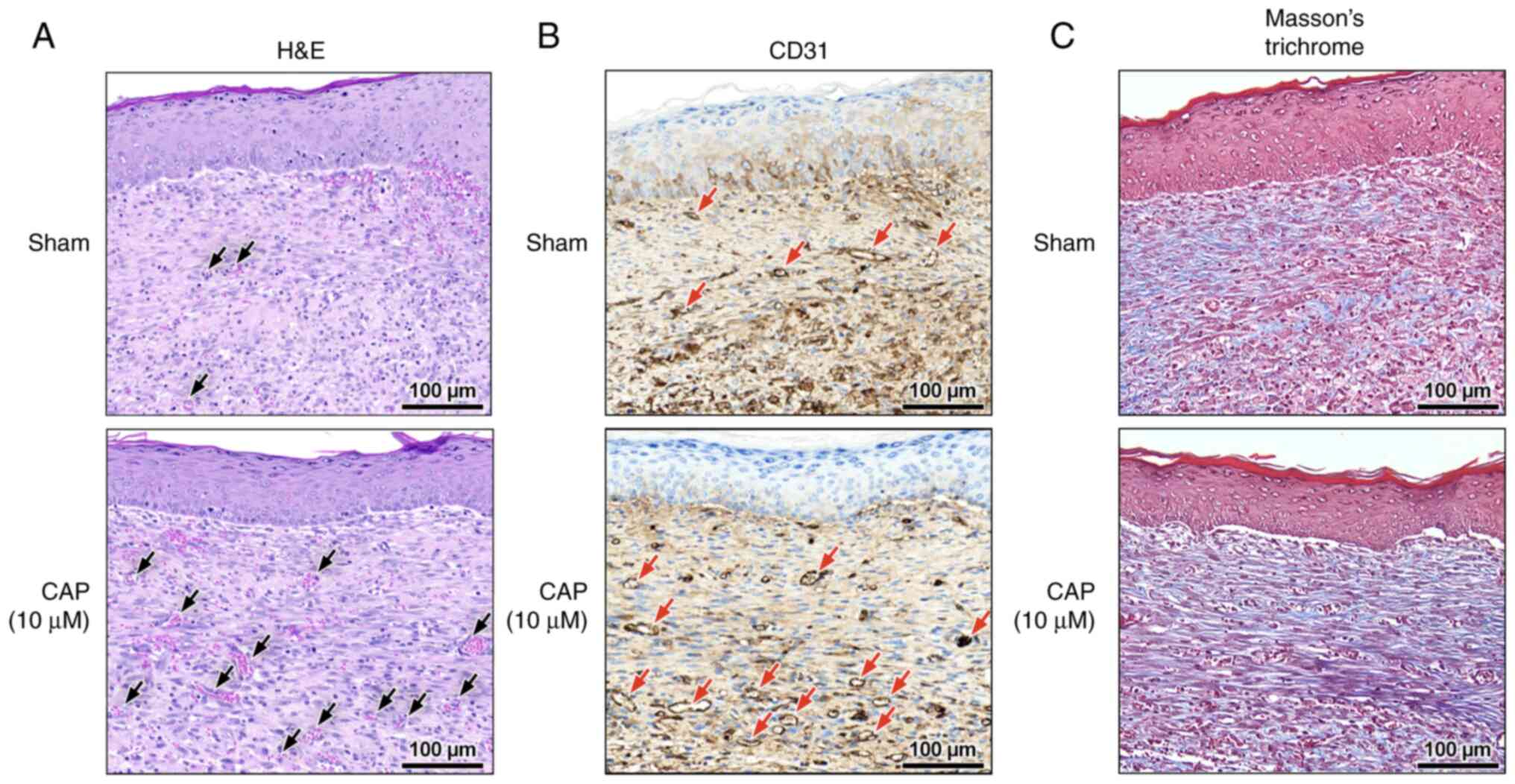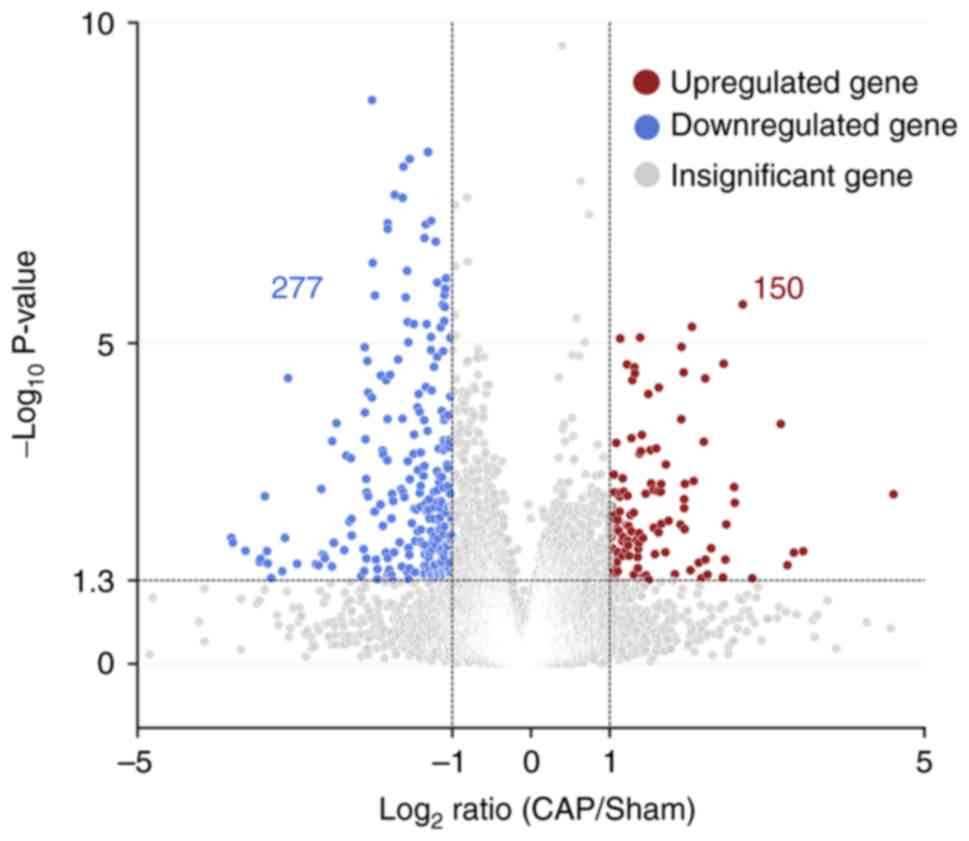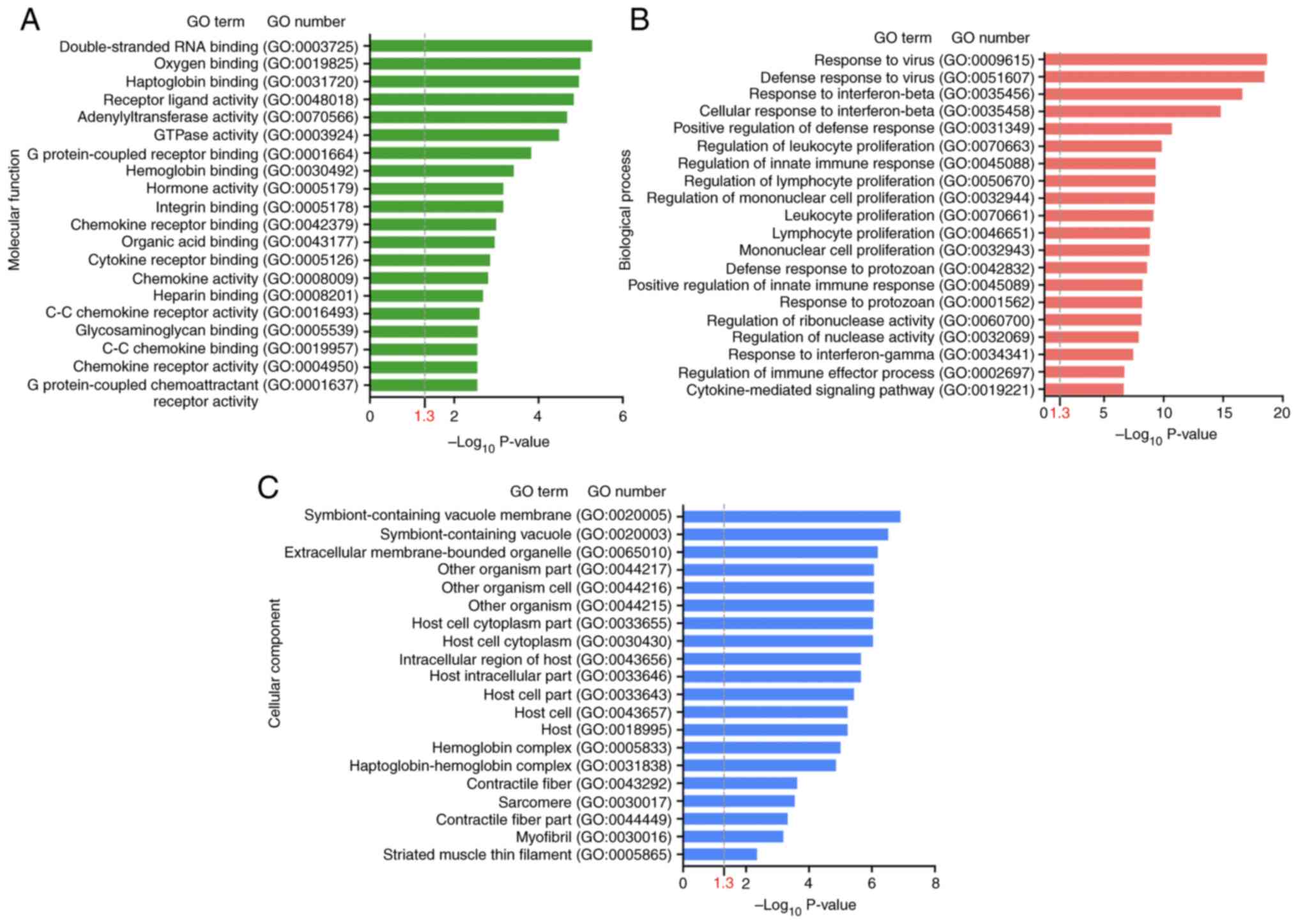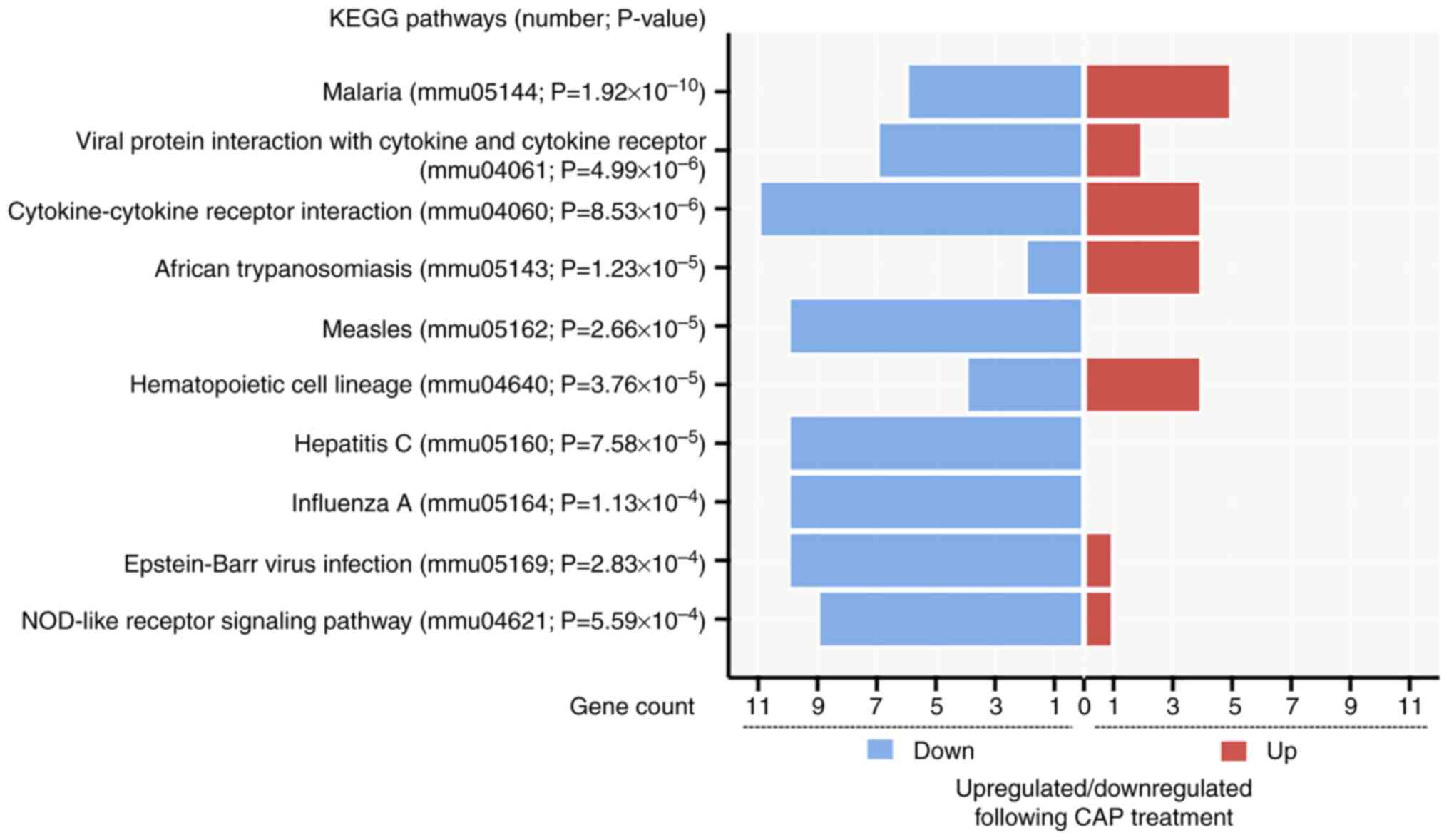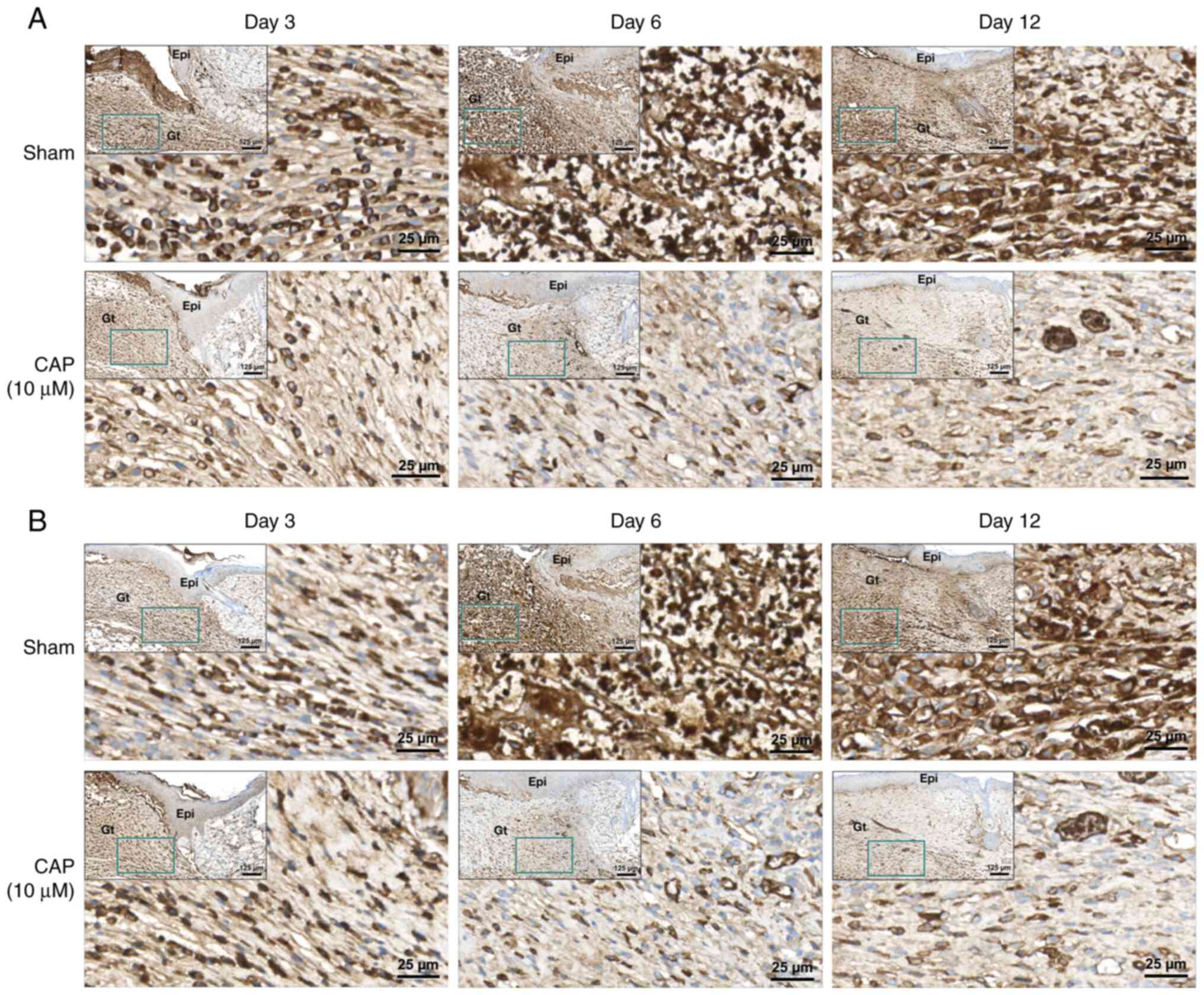|
1
|
Wallace HA, Basehore BM and Zito PM: Wound
Healing Phases. StatPearls. StatPearls Publishing LLC; Treasure
Island, FL: 2022
|
|
2
|
Wilkinson HN and Hardman MJ: Wound
healing: Cellular mechanisms and pathological outcomes. Open Biol.
10:2002232020. View Article : Google Scholar : PubMed/NCBI
|
|
3
|
Raziyeva K, Kim Y, Zharkinbekov Z,
Kassymbek K, Jimi S and Saparov A: Immunology of acute and chronic
wound healing. Biomolecules. 11:7002021. View Article : Google Scholar : PubMed/NCBI
|
|
4
|
Larouche J, Sheoran S, Maruyama K and
Martino MM: Immune regulation of skin wound healing: Mechanisms and
novel therapeutic targets. Adv wound care (New Rochelle).
7:209–231. 2018. View Article : Google Scholar : PubMed/NCBI
|
|
5
|
Rodrigues M, Kosaric N, Bonham CA and
Gurtner GC: Wound healing: A cellular perspective. Physiol Rev.
99:665–706. 2019. View Article : Google Scholar : PubMed/NCBI
|
|
6
|
Barrientos S, Stojadinovic O, Golinko MS,
Brem H and Tomic-Canic M: Growth factors and cytokines in wound
healing. Wound Repair Regen. 16:585–601. 2008. View Article : Google Scholar : PubMed/NCBI
|
|
7
|
Kourtzelis I, Hajishengallis G and
Chavakis T: Phagocytosis of apoptotic cells in resolution of
inflammation. Front Immunol. 11:5532020. View Article : Google Scholar : PubMed/NCBI
|
|
8
|
Piipponen M, Li D and Landén NX: The
immune functions of keratinocytes in skin wound healing. Int J Mol
Sci. 21:87902020. View Article : Google Scholar : PubMed/NCBI
|
|
9
|
Landén NX, Li D and Ståhle M: Transition
from inflammation to proliferation: A critical step during wound
healing. Cell Mol Life Sci. 73:3861–3885. 2016. View Article : Google Scholar : PubMed/NCBI
|
|
10
|
Koh TJ and DiPietro LA: Inflammation and
wound healing: The role of the macrophage. Expert Rev Mol Med.
13:e232011. View Article : Google Scholar : PubMed/NCBI
|
|
11
|
Cañedo-Dorantes L and Cañedo-Ayala M: Skin
acute wound healing: A comprehensive review. Int J Inflam.
2019:37063152019.PubMed/NCBI
|
|
12
|
Germolec DR, Shipkowski KA, Frawley RP and
Evans E: Markers of inflammation. Methods Mol Biol. 1803:57–79.
2018. View Article : Google Scholar : PubMed/NCBI
|
|
13
|
Zhao R, Liang H, Clarke E, Jackson C and
Xue M: Inflammation in chronic wounds. Int J Mol Sci. 17:20852016.
View Article : Google Scholar : PubMed/NCBI
|
|
14
|
Li J, Chen J and Kirsner R:
Pathophysiology of acute wound healing. Clin Dermatol. 25:9–18.
2007. View Article : Google Scholar : PubMed/NCBI
|
|
15
|
Darby IA, Laverdet B, Bonté F and
Desmoulière A: Fibroblasts and myofibroblasts in wound healing.
Clin Cosmet Investig Dermatol. 7:301–311. 2014.PubMed/NCBI
|
|
16
|
Hernández-Pérez T, Gómez-García MDR,
Valverde ME and Paredes-López O: Capsicum annuum (hot pepper): An
ancient Latin-American crop with outstanding bioactive compounds
and nutraceutical potential. A review. Compr Rev Food Sci Food Saf.
19:2972–2993. 2020. View Article : Google Scholar : PubMed/NCBI
|
|
17
|
Belenahalli Shekarappa S, Kandagalla S, H
Malojirao V G S PK, B T P and Hanumanthappa M: A systems biology
approach to identify the key targets of curcumin and capsaicin that
downregulate pro-inflammatory pathways in human monocytes. Comput
Biol Chem. 83:1071622019. View Article : Google Scholar : PubMed/NCBI
|
|
18
|
Ilie MA, Caruntu C, Tampa M, Georgescu SR,
Matei C, Negrei C, Ion RM, Constantin C, Neagu M and Boda D:
Capsaicin: Physicochemical properties, cutaneous reactions and
potential applications in painful and inflammatory conditions. Exp
Ther Med. 18:916–925. 2019.PubMed/NCBI
|
|
19
|
Demirbilek S, Ersoy MO, Demirbilek S,
Karaman A, Gürbüz N, Bayraktar N and Bayraktar M: Small-dose
capsaicin reduces systemic inflammatory responses in septic rats.
Anesth Analg. 99:1501–1507. 2004. View Article : Google Scholar : PubMed/NCBI
|
|
20
|
Basharat S, Gilani SA, Iftikhar F, Murtaza
MA, Basharat A, Sattar A, Qamar MM and Ali M: Capsaicin: Plants of
the genus capsicum and positive effect of oriental spice on skin
health. Skin Pharmacol Physiol. 33:331–341. 2020. View Article : Google Scholar : PubMed/NCBI
|
|
21
|
Truong T and Jones KS: Capsaicin reduces
PLGA-induced fibrosis by promoting M2 macrophages and suppressing
overall inflammatory Response. J Biomed Mater Res A. 106:2424–2432.
2018. View Article : Google Scholar : PubMed/NCBI
|
|
22
|
Kim CS, Kawada T, Kim BS, Han IS, Choe SY,
Kurata T and Yu R: Capsaicin exhibits anti-inflammatory property by
inhibiting IkB-a degradation in LPS-stimulated peritoneal
macrophages. Cell Signal. 15:299–306. 2003. View Article : Google Scholar : PubMed/NCBI
|
|
23
|
Liu P, Hao J, Zhao J, Zou R, Han J, Tian
J, Liu W and Wang H: Integrated Network pharmacology and
experimental validation approach to investigate the therapeutic
effects of capsaicin on lipopolysaccharide-induced acute lung
injury. Mediators Inflamm. 2022:92728962022. View Article : Google Scholar : PubMed/NCBI
|
|
24
|
Watcher MA and Wheeland RG: The role of
topical agents in the healing of full-thickness wounds. J Dermatol
Surg Oncol. 15:1188–1195. 1989. View Article : Google Scholar : PubMed/NCBI
|
|
25
|
Son B, Kang W, Park S, Choi D and Park T:
Dermal olfactory receptor OR51B5 is essential for survival and
collagen synthesis in human dermal fibroblast (Hs68 Cells). Int J
Mol Sci. 22:92732021. View Article : Google Scholar : PubMed/NCBI
|
|
26
|
Glenn HL, Messner J and Meldrum DR: A
simple non-perturbing cell migration assay insensitive to
proliferation effects. Sci Rep. 6:316942016. View Article : Google Scholar : PubMed/NCBI
|
|
27
|
Ashcroft GS, Jeong MJ, Ashworth JJ,
Hardman M, Jin W, Moutsopoulos N, Wild T, McCartney-Francis N, Sim
D, McGrady G, et al: Tumor necrosis factor-alpha (TNF-α) is a
therapeutic target for impaired cutaneous wound healing. Wound
Repair Regen. 20:38–49. 2012. View Article : Google Scholar : PubMed/NCBI
|
|
28
|
Pratt SJP, Hernández-Ochoa EO, Lee RM, Ory
EC, Lyons JS, Joca HC, Johnson A, Thompson K, Bailey P, Lee CJ, et
al: Real-time scratch assay reveals mechanisms of early calcium
signaling in breast cancer cells in response to wounding.
Oncotarget. 9:25008–25024. 2018. View Article : Google Scholar : PubMed/NCBI
|
|
29
|
Livak KJ and Schmittgen TD: Analysis of
relative gene expression data using real-time quantitative PCR and
the 2(−Delta Delta C(T)) method. Methods. 25:402–408. 2001.
View Article : Google Scholar : PubMed/NCBI
|
|
30
|
Council NR, . Guide for the Care and Use
of Laboratory Animals: 8th Edition. The National Academies Press;
Washington, DC: 2011
|
|
31
|
Yen YH, Pu CM, Liu CW, Chen YC, Chen YC,
Liang CJ, Hsieh JH, Huang HF and Chen YL: Curcumin accelerates
cutaneous wound healing via multiple biological actions: The
involvement of TNF-α, MMP-9, α-SMA, and collagen. Int Wound J.
15:605–617. 2018. View Article : Google Scholar : PubMed/NCBI
|
|
32
|
Bankhead P, Loughrey MB, Fernández JA,
Dombrowski Y, McArt DG, Dunne PD, McQuaid S, Gray RT, Murray LJ,
Coleman HG, et al: QuPath: Open source software for digital
pathology image analysis. Sci Rep. 7:168782017. View Article : Google Scholar : PubMed/NCBI
|
|
33
|
Pertea M, Kim D, Pertea GM, Leek JT and
Salzberg SL: Transcript-level expression analysis of RNA-seq
experiments with HISAT, StringTie and Ballgown. Nat Protoc.
11:1650–1667. 2016. View Article : Google Scholar : PubMed/NCBI
|
|
34
|
Yu G, Wang LG, Han Y and He QY:
clusterProfiler: An R package for comparing biological themes among
gene clusters. Omics. 16:284–287. 2012. View Article : Google Scholar : PubMed/NCBI
|
|
35
|
Dennis G Jr, Sherman BT, Hosack DA, Yang
J, Gao W, Lane HC and Lempicki RA: DAVID: Database for annotation,
visualization, and integrated discovery. Genome Biol. 4:P32003.
View Article : Google Scholar : PubMed/NCBI
|
|
36
|
Kawano Y, Patrulea V, Sublet E, Borchard
G, Iyoda T, Kageyama R, Morita A, Seino S, Yoshida H, Jordan O and
Hanawa T: Wound healing promotion by hyaluronic acid: Effect of
molecular weight on gene expression and in vivo wound closure.
Pharmaceuticals (Basel). 14:3012021. View Article : Google Scholar : PubMed/NCBI
|
|
37
|
Huang SM, Wu CS, Chiu MH, Wu CH, Chang YT,
Chen GS and Lan CE: High glucose environment induces M1 macrophage
polarization that impairs keratinocyte migration via TNF-α: An
important mechanism to delay the diabetic wound healing. J Dermatol
Sci. 96:159–167. 2019. View Article : Google Scholar : PubMed/NCBI
|
|
38
|
Takabe P, Kärnä R, Rauhala L, Tammi M,
Tammi R and Pasonen-Seppänen S: Melanocyte hyaluronan coat
fragmentation enhances the UVB-induced TLR-4 receptor signaling and
expression of proinflammatory mediators IL6, IL8, CXCL1, and CXCL10
via NF-κB activation. J Invest Dermatol. 139:1993–2003.e1994. 2019.
View Article : Google Scholar : PubMed/NCBI
|
|
39
|
Johnson BZ, Stevenson AW, Prêle CM, Fear
MW and Wood FM: The role of IL-6 in skin fibrosis and cutaneous
wound healing. Biomedicines. 8:1012020. View Article : Google Scholar : PubMed/NCBI
|
|
40
|
Rees PA, Greaves NS, Baguneid M and Bayat
A: Chemokines in wound healing and as potential therapeutic targets
for reducing cutaneous scarring. Adv Wound Care (New Rochelle).
4:687–703. 2015. View Article : Google Scholar : PubMed/NCBI
|
|
41
|
Shukla SK, Sharma AK, Gupta V and
Yashavarddhan MH: Pharmacological control of inflammation in wound
healing. J Tissue Viability. 28:218–222. 2019. View Article : Google Scholar : PubMed/NCBI
|
|
42
|
Hemmati AA, Larki-Harchegani A, Shabib S,
Jalali A, Rezaei A and Housmand G: Wound healing property of milk
in full thickness wound model of rabbit. Int J Surg. 54:133–140.
2018. View Article : Google Scholar : PubMed/NCBI
|
|
43
|
Van de Velde F, Esposito D, Grace MH,
Pirovani ME and Lila MA: Anti-inflammatory and wound healing
properties of polyphenolic extracts from strawberry and blackberry
fruits. Food Res Int. 121:453–462. 2019. View Article : Google Scholar : PubMed/NCBI
|
|
44
|
Saher T, Manzoor R, Abbas K, Mudassir J,
Wazir MA, Ali E, Ahmad Siddique F, Rasul A, Qadir MI, Aleem A, et
al: Analgesic and Anti-inflammatory properties of two hydrogel
formulations comprising polyherbal extract. J Pain Res.
15:1203–1219. 2022. View Article : Google Scholar : PubMed/NCBI
|
|
45
|
Dev SK, Choudhury PK, Srivastava R and
Sharma M: Antimicrobial, anti-inflammatory and wound healing
activity of polyherbal formulation. Biomed Pharmacother.
111:555–567. 2019. View Article : Google Scholar : PubMed/NCBI
|
|
46
|
Guo JW, Pu CM, Liu CY, Lo SL and Yen YH:
Curcumin-loaded Self-microemulsifying gel for enhancing wound
closure. Skin Pharmacol Physiol. 33:300–308. 2020. View Article : Google Scholar : PubMed/NCBI
|
|
47
|
Habtemariam S: Anti-inflammatory
therapeutic mechanisms of natural products: Insight from rosemary
diterpenes, carnosic acid and carnosol. Biomedicines. 11:5452023.
View Article : Google Scholar : PubMed/NCBI
|
|
48
|
Yang F, Vu S, Yarov-Yarovoy V and Zheng J:
Rational design and validation of a vanilloid-sensitive TRPV2 ion
channel. Proc Natl Acad Sci USA. 113:E3657–E3666. 2016.PubMed/NCBI
|
|
49
|
Caterina MJ, Schumacher MA, Tominaga M,
Rosen TA, Levine JD and Julius D: The capsaicin receptor: A
heat-activated ion channel in the pain pathway. Nature.
389:816–824. 1997. View
Article : Google Scholar : PubMed/NCBI
|
|
50
|
Tominaga M, Caterina MJ, Malmberg AB,
Rosen TA, Gilbert H, Skinner K, Raumann BE, Basbaum AI and Julius
D: The cloned capsaicin receptor integrates multiple pain-producing
stimuli. Neuron. 21:531–543. 1998. View Article : Google Scholar : PubMed/NCBI
|
|
51
|
Caterina MJ, Leffler A, Malmberg AB,
Martin WJ, Trafton J, Petersen-Zeitz KR, Koltzenburg M, Basbaum AI
and Julius D: Impaired nociception and pain sensation in mice
lacking the capsaicin receptor. Science. 288:306–313. 2000.
View Article : Google Scholar : PubMed/NCBI
|
|
52
|
Elokely K, Velisetty P, Delemotte L,
Palovcak E, Klein ML, Rohacs T and Carnevale V: Understanding TRPV1
activation by ligands: Insights from the binding modes of capsaicin
and resiniferatoxin. Proc Natl Acad Sci USA. 113:E137–E145. 2016.
View Article : Google Scholar : PubMed/NCBI
|
|
53
|
Frias B and Merighi A: Capsaicin,
nociception and pain. Molecules. 21:7972016. View Article : Google Scholar : PubMed/NCBI
|
|
54
|
Rains C and Bryson HM: Topical capsaicin.
A review of its pharmacological properties and therapeutic
potential in post-herpetic neuralgia, diabetic neuropathy and
osteoarthritis. Drugs Aging. 7:317–328. 1995. View Article : Google Scholar : PubMed/NCBI
|
|
55
|
Kim SJ, Lee SA, Yun SJ, Kim JK, Park JS,
Jeong HS, Lee JH, Moon SJ and Won YH: Expression of vanilloid
receptor 1 in cultured fibroblast. Exp Dermatol. 15:362–367. 2006.
View Article : Google Scholar : PubMed/NCBI
|
|
56
|
Bok E, Chung YC, Kim KS, Baik HH, Shin WH
and Jin BK: Modulation of M1/M2 polarization by capsaicin
contributes to the survival of dopaminergic neurons in the
lipopolysaccharide-lesioned substantia nigra in vivo. Exp Mol Med.
50:1–14. 2018. View Article : Google Scholar : PubMed/NCBI
|
|
57
|
Lv Z, Xu X, Sun Z, Yang YX, Guo H, Li J,
Sun K, Wu R, Xu J, Jiang Q, et al: TRPV1 alleviates osteoarthritis
by inhibiting M1 macrophage polarization via Ca2+/CaMKII/Nrf2
signaling pathway. Cell Death Dis. 12:5042021. View Article : Google Scholar : PubMed/NCBI
|
|
58
|
Southall MD, Li T, Gharibova LS, Pei Y,
Nicol GD and Travers JB: Activation of epidermal vanilloid
receptor-1 induces release of proinflammatory mediators in human
keratinocytes. J Pharmacol Exp Ther. 304:217–222. 2003. View Article : Google Scholar : PubMed/NCBI
|
|
59
|
Hwang MK, Bode AM, Byun S, Song NR, Lee
HJ, Lee KW and Dong Z: Cocarcinogenic effect of capsaicin involves
activation of EGFR signaling but not TRPV1. Cancer Res.
70:6859–6869. 2010. View Article : Google Scholar : PubMed/NCBI
|
|
60
|
Hou X, Li H, Zhang C, Wang J and Li X and
Li X: Overexpression of Fibulin-5 attenuates burn-induced
inflammation via TRPV1/CGRP pathway. Exp Cell Res. 357:320–327.
2017. View Article : Google Scholar : PubMed/NCBI
|
|
61
|
Miyazaki A, Ohkubo T, Hatta M, Ishikawa H
and Yamazaki J: Integrin α6β4 and TRPV1 channel coordinately
regulate directional keratinocyte migration. Biochem Biophys Res
Commun. 458:161–167. 2015. View Article : Google Scholar : PubMed/NCBI
|
|
62
|
Su L, Zhang Y, He K, Wei S, Pei H, Wang Q,
Yang D and Yang Y: Activation of transient receptor potential
vanilloid 1 accelerates re-endothelialization and inhibits
neointimal formation after vascular injury. J Vasc Surg.
65:197–205.e2. 2017. View Article : Google Scholar : PubMed/NCBI
|
|
63
|
Shin DH, Kim OH, Jun HS and Kang MK:
Inhibitory effect of capsaicin on B16-F10 melanoma cell migration
via the phosphatidylinositol 3-kinase/Akt/Rac1 signal pathway. Exp
Mol Med. 40:486–494. 2008. View Article : Google Scholar : PubMed/NCBI
|
|
64
|
Liu NC, Hsieh PF, Hsieh MK, Zeng ZM, Cheng
HL, Liao JW and Chueh PJ: Capsaicin-mediated tNOX (ENOX2)
up-regulation enhances cell proliferation and migration in vitro
and in vivo. J Agric Food Chem. 60:2758–2765. 2012. View Article : Google Scholar : PubMed/NCBI
|
|
65
|
Sumioka T, Okada Y, Reinach PS, Shirai K,
Miyajima M, Yamanaka O and Saika S: Impairment of corneal
epithelial wound healing in a TRPV1-deficient mouse. Invest
Ophthalmol Vis Sci. 55:3295–3302. 2014. View Article : Google Scholar : PubMed/NCBI
|
|
66
|
Holzer-Geissler JCJ, Schwingenschuh S,
Zacharias M, Einsiedler J, Kainz S, Reisenegger P, Holecek C,
Hofmann E, Wolff-Winiski B, Fahrngruber H, et al: The impact of
prolonged inflammation on wound healing. Biomedicines. 10:8562022.
View Article : Google Scholar : PubMed/NCBI
|
|
67
|
Xu Z, Liang B, Tian J and Wu J:
Anti-inflammation biomaterial platforms for chronic wound healing.
Biomater Sci. 9:4388–4409. 2021. View Article : Google Scholar : PubMed/NCBI
|
|
68
|
Lotfollahi Z, Dawson J, Fitridge R and
Bursill C: The Anti-inflammatory and proangiogenic properties of
high-density lipoproteins: An emerging role in diabetic wound
healing. Adv Wound Care (New Rochelle). 10:370–380. 2021.
View Article : Google Scholar : PubMed/NCBI
|
|
69
|
Veith AP, Henderson K, Spencer A, Sligar
AD and Baker AB: Therapeutic strategies for enhancing angiogenesis
in wound healing. Adv Drug Deliv Rev. 146:97–125. 2019. View Article : Google Scholar : PubMed/NCBI
|
|
70
|
Tonnesen MG, Feng X and Clark RA:
Angiogenesis in wound healing. J Investig Dermatol Symp Proc.
5:40–46. 2000. View Article : Google Scholar : PubMed/NCBI
|
|
71
|
DiPietro LA: Angiogenesis and wound
repair: When enough is enough. J Leukoc Biol. 100:979–984. 2016.
View Article : Google Scholar : PubMed/NCBI
|
|
72
|
Mathew-Steiner SS, Roy S and Sen CK:
Collagen in wound healing. Bioengineering (Basel). 8:632021.
View Article : Google Scholar : PubMed/NCBI
|
|
73
|
Mailly L and Baumert TF: Hepatitis C virus
infection and tight junction proteins: The ties that bind. Biochim
Biophys Acta Biomembr. 1862:1832962020. View Article : Google Scholar : PubMed/NCBI
|
|
74
|
Kanda Y, Yamasaki Y, Shimura S, Kamisuki
S, Sugawara F, Nagumo Y and Usui T: MA026, an anti-hepatitis C
virus compound, opens tight junctions of the epithelial cell
membrane. J Antibiot (Tokyo). 70:691–694. 2017. View Article : Google Scholar : PubMed/NCBI
|
|
75
|
Deng Z, Chen M, Xie H, Jian D, Xu S, Peng
Q, Sha K, Liu Y, Zhang Y, Shi W and Li J: Claudin reduction may
relate to an impaired skin barrier in rosacea. J Dermatol.
46:314–321. 2019. View Article : Google Scholar : PubMed/NCBI
|
|
76
|
Teles RMB, Lu J, Tió-Coma M, Goulart IMB,
Banu S, Hagge D, Bobosha K, Ottenhoff THM, Pellegrini M, Geluk A
and Modlin RL: Identification of a systemic interferon-γ inducible
antimicrobial gene signature in leprosy patients undergoing
reversal reaction. PLoS Negl Trop Dis. 13:e00077642019. View Article : Google Scholar : PubMed/NCBI
|
|
77
|
Laato M, Heino J, Gerdin B, Kähäri VM and
Niinikoski J: Interferon-gamma-induced inhibition of wound healing
in vivo and in vitro. Ann Chir Gynaecol. 90 (Suppl 215):S19–S23.
2001.PubMed/NCBI
|
|
78
|
Miles RH, Paxton TP, Zacheis D, Dries DJ
and Gamelli RL: Systemic administration of interferon-gamma impairs
wound healing. J Surg Res. 56:288–294. 1994. View Article : Google Scholar : PubMed/NCBI
|
|
79
|
Ishida Y, Kondo T, Takayasu T, Iwakura Y
and Mukaida N: The essential involvement of cross-talk between
IFN-gamma and TGF-beta in the skin wound-healing process. J
Immunol. 172:1848–1855. 2004. View Article : Google Scholar : PubMed/NCBI
|
|
80
|
Grada A, Mervis J and Falanga V: Research
techniques made simple: Animal models of wound healing. J Invest
Dermatol. 138:2095–2105.e2091. 2018. View Article : Google Scholar : PubMed/NCBI
|
|
81
|
Fischer KS, Litmanovich B, Sivaraj D,
Kussie HC, Hahn WW, Hostler AC, Chen K and Gurtner GC: Protocol for
the splinted, human-like excisional wound model in mice. Bio
Protoc. 13:e46062023.PubMed/NCBI
|



